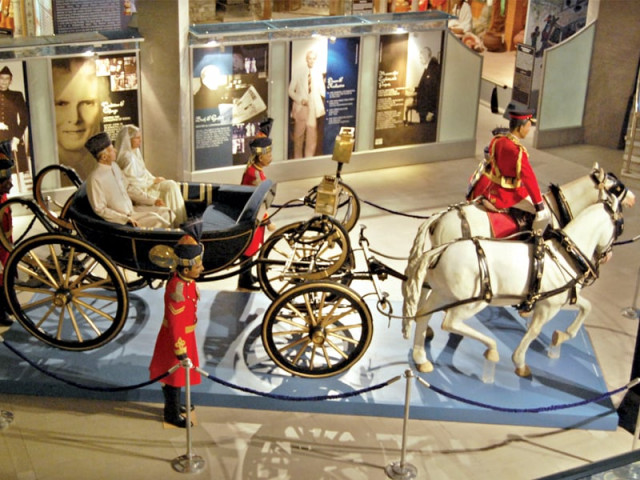Inteview: Preserving the past for the future
Changezi has over 50 sculptures on display around Pakistan

Inteview: Preserving the past for the future
However, the sculptor who is more popularly known as Changezi within the art scene, wasn’t always sculpting — he started trying his hand at it just five years ago.
“I have been in the arts field for 26 years now, mostly focusing on ceramics, so the transition to sculpting was easy and maybe inevitable as well,” said Changezi.
The artist added that sculpting has been kind to him as it opened more avenues for expression and funding as the National Institute of Folk and Traditional Heritage has started making valuable strides in promoting and preserving Pakistan’s rich culture and history.
Changezi says the biggest boon to his sculpting career came from the National Monument Museum. He has thirty-six sculptures on display there, including those of Muhammad Ali Jinnah, Muhammad Iqbal and slain former prime minister Benazir Bhutto.
“It has been an honour immortalising such great historical figures, as the purpose of art is to pay tribute to the past and show a vision of the future. However we still have a long way to go for using art to encapsulate our culture and traditions,” said Changezi.
Take for instance Changezi’s latest venture, a monument of revolutionary Pakistani short story writer Saadat Hassan Manto at the National Book Foundation. The sculpture of Manto will be the first of its kind in South Asia, and will be installed at the foundation in a month.
“Pakistan has been late in honouring many of its heroes because since its inception, the country has been in a state of crisis and we didn’t have time and resources. But now people are realising the importance of preserving important people and dates, especially to educate future generations,” he said.
The sculptor’s vision for his work, and sculpting in general, isn’t limited to just a few generations after him but expands much farther.
Changezi noted that ancient civilizations such as Mehergarh, Gandhara, Taxila, Greece and Egypt all left behind sculptures that we study and learn from today. Sculptures, he believes, are the best way to leave a legacy behind as they are more durable than other forms of art.
The sculpture describes his technique as novel and experimental. He incorporates various elements such as metal and stone in addition to clay. Though he displays remarkable finesse in most of his works, sometimes a deliberate rawness or roughness can be detected when he is awarded more artistic license.
Though the well-rounded sculptor has immortalised historical figures, literary personalities, folk singers and war heroes, he is looking forward to continue capturing Pakistan’s culture.
“There is still so much to be done as we have so many remarkable people in our country who deserve tribute — our wrestlers, cricketers, and even musicians like the great Nusrat Fateh Ali have yet to be paid homage to,” said Changzi. He added that he aspires and encourages others to be more like his personal hero, Michelangelo, who was a renaissance man, and a master of every art form he took up.
Published in The Express Tribune, October 1st, 2012.



















COMMENTS
Comments are moderated and generally will be posted if they are on-topic and not abusive.
For more information, please see our Comments FAQ